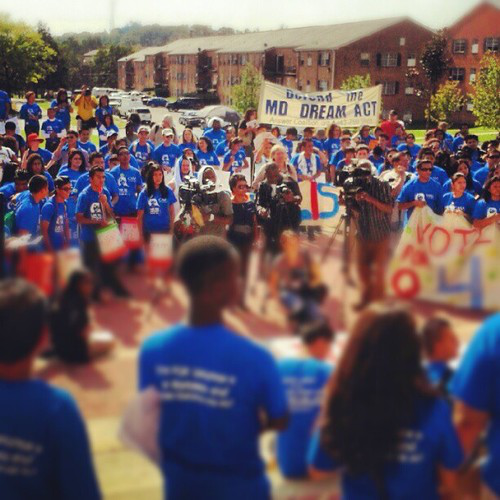 |
| Casa De Maryland DREAM Act Rally |
To begin our community partnership efforts to learn more about
the undocumented Latina/o student population, we contacted Casa de Maryland, a large
community based organization that has worked tirelessly with youth in the area
to push for immigration reform and the Maryland DREAM Act. The Maryland
Dream Act (SB167) was enacted in April 2012, and allows undocumented immigrant
students to pay in-state tuition rates at public institutions of higher
education, if they meet certain requirements.
We met with Rommel Sandino, Community Youth Organizer, who informed us
that Casa has a very active youth group that meets regularly to organize
political efforts to advocate and inform the community about the Maryland DREAM
Act. We also learned that due to the
passage of the Maryland Dream Act there were some unintended consequences for Prince
George’s Community College students who were originally receiving in-state
tuition and now are not due to the specific limitations of the policy. The
law does apply to all 24 jurisdictions within the state of Maryland—every
county in the state of Maryland, plus the city of Baltimore.
According to the Maryland Dream Act, in order to qualify for
in-state tuition rates, undocumented students must enroll in a community
college no later than four years after graduating from a Maryland high school
(or GED equivalent) and they would only be allowed to enroll in a public senior
higher education institution (i.e., the University of Maryland) after they have
earned at least 60 credits at a community college. Only undocumented students
who enroll in a Maryland community college after 2011 are eligible for the
Maryland Dream Act benefits.
We hope to learn more about Casa’s youth organizing group in
the near future, and possibly elicit support for our study. Stay tuned to what
else we will do to collaborate with Casa de Maryland, and who else we partner
with throughout the study.

No comments:
Post a Comment